by Karin Pütt
With a pilgrimage, Armenians from all over the world commemorate the victims of the death marches in 1915 and 1916. The center of this commemoration is memorial to the genocide in Dayr az-Zawr, which has been severely damaged during the reign of the so-called IS. However, it was possible to rebuild it true to the original. In 2004 our author Karin Pütt participated the Armenian commemoration day.
A solemnly slow procession passes through Aleppo. Thousands of Armenians line the streets, groups of young people, church servants and choir singers in vestments walk with their spiritual leaders, the Patriarchs of Cilicia and Armenia, to the Church of the Forty Martyrs in the old city. It does not offer nearly enough space for all people, they also stand crowded together in the courtyard and on the alleys. On the 24th April every year, Armenians all over the world remember the dead of 1915/16 genocide.
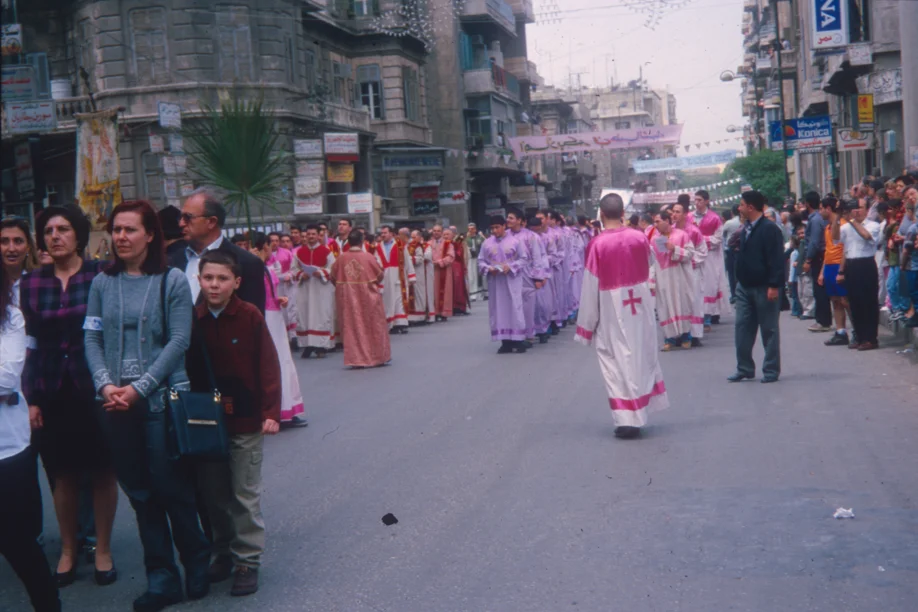
In 1915, Aleppo was one of the large gathering points from which the deportees were sent to the Syrian Desert around Dayr az-Zawr. From all parts of the Ottoman Empire, people had been driven here in torturous death marches, often lasting weeks: women, children, old people.
Conspicuously many young people, but also older Armenians from Syria, the surrounding countries, Europe and America came to the commemoration ceremonies. After the service in Aleppo, we board buses that are ready to take us to the places where the Armenian people died.
Where today the well-developed country road runs parallel to the Euphrates River at a distance of a few kilometres, the deportees were driven forward on foot in 1915 and 1916. They died of thirst, hunger, exhaustion, maltreatment, and disease on the roadside and in the camps. At that time, Armenian women threw themselves into the Euphrates to be released from their torment. To this day, people in the neighbouring villages tell how corpses used to drift in the Euphrates for weeks.
At the memorial site in today’s provincial capital Dayr az-Zawr on the Euphrates, the buses stop in front of a building that stands out from the simple concrete structures of the surrounding area: coloured sandstone clad the two-storey complex with narrow, high arched windows on the upper floor and a long staircase leading there – the only way to enter the complex. The stairs are intended to remind of the Armenian people’s ordeal. In bright sunlight, people reach the cobbled plateau, which is bordered all around by rooms, the church and arcades. The memorial to the Armenian martyrs was designed by the Syrian-Armenian architect Sarkis Balmanoukian and inaugurated in 1991.
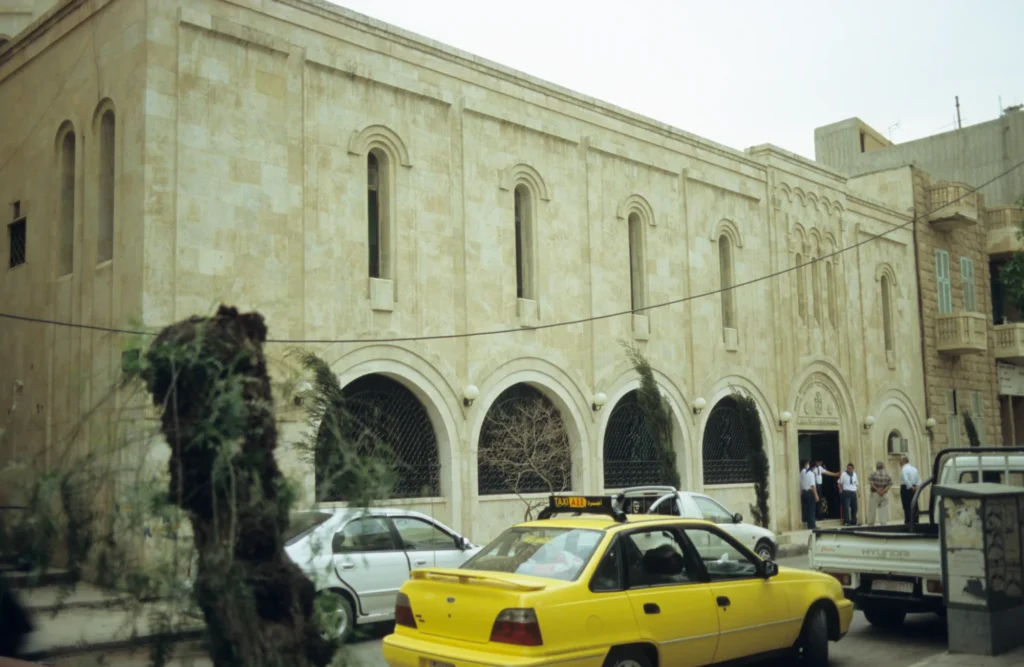
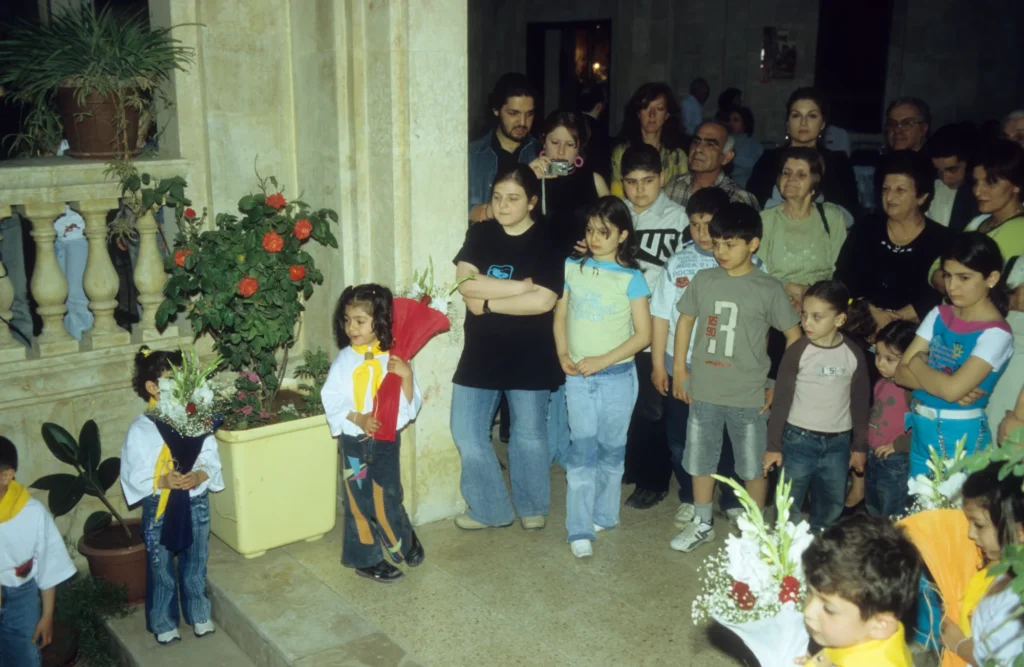
The pilgrims are first drawn to the small church, which reaches for the sky, dominating the entire complex. Erected on an octagonal-round ground plot and with a central tower, it displays the typical elements of Armenian religious architecture: facades made of natural stone with sparing geometric architectural decoration and narrow arched windows that illuminate the church interior. Exactly in the middle of the interior is a white marble stele which ends in an engraved cross, an Armenian khachkar. The eyes of pilgrims who are still unfamiliar with the place travel down the stele: a hole in the floor gives a view into the crypt in the basement, where at the foot of the marble pillar bones are lying. In the lower church you can see up close that the bones are embedded in crumbs of the earth in which they were found. Young people stand shivering in front of these bones behind glass.
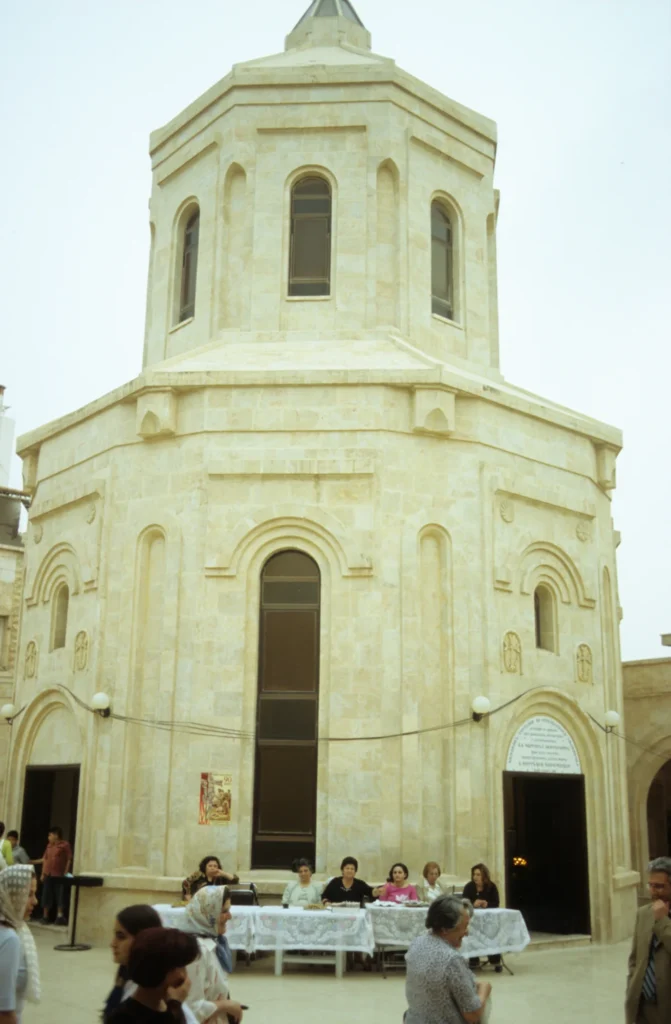
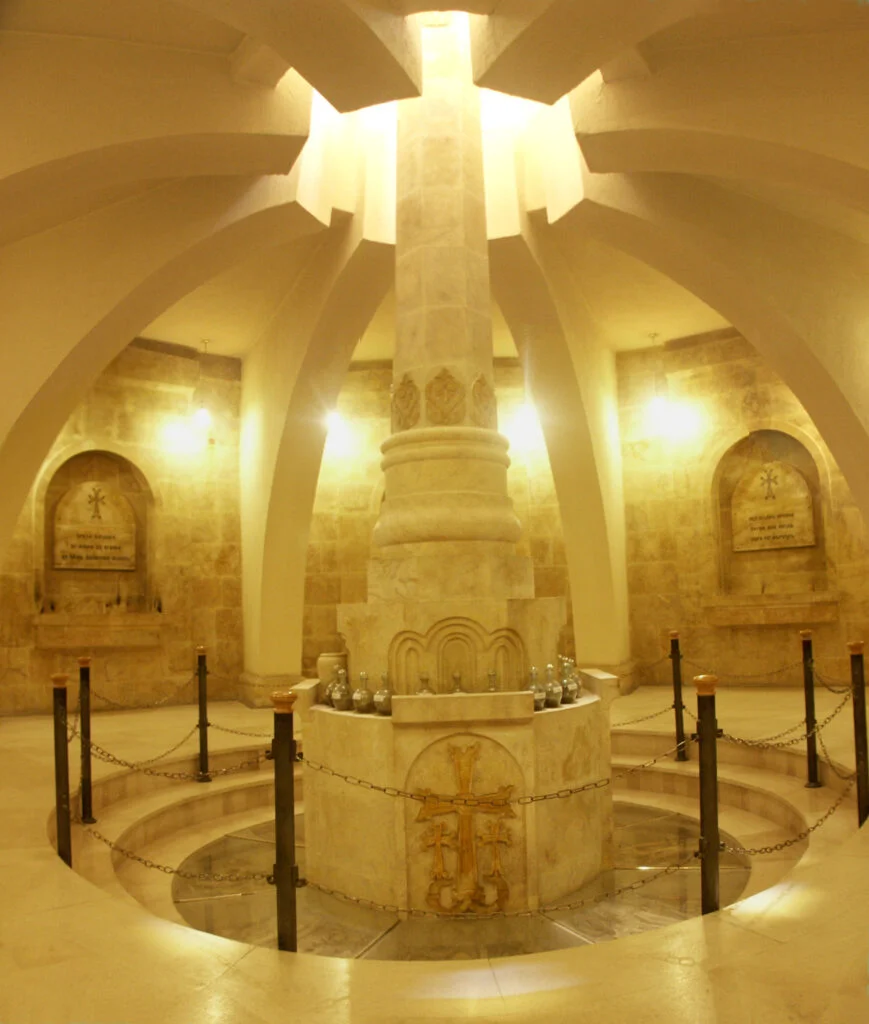
The memorial is located on the site of the former camp for Armenians in Dayr az-Zawr.
Only a few of the young people are drawn to the small museum room next door. They are only too familiar with the data, facts and pictures of the genocide. However, I met a young Armenian there who had dug up bones in north-eastern Syria on his own initiative in order to prove traces of Armenian life there and to bury the bones in a dignified manner.
Around three o’clock at night, other buses with pilgrims from Damascus and Lebanon arrive. After a short break at the memorial, all buses travel northwards together along the Euphrates tributary river Khabur. We pass the barren desert steppe for one and a half hours until a striking small mountain cone emerges. The vehicles stop at the roadside and hundreds of pilgrims stream up the mountain at dawn. They gather in front of the small chapel there for mass. It was only in 1999 that the Armenian Orthodox community had it built. Thousands of bones were found, testifying to the massacre that had taken place there.
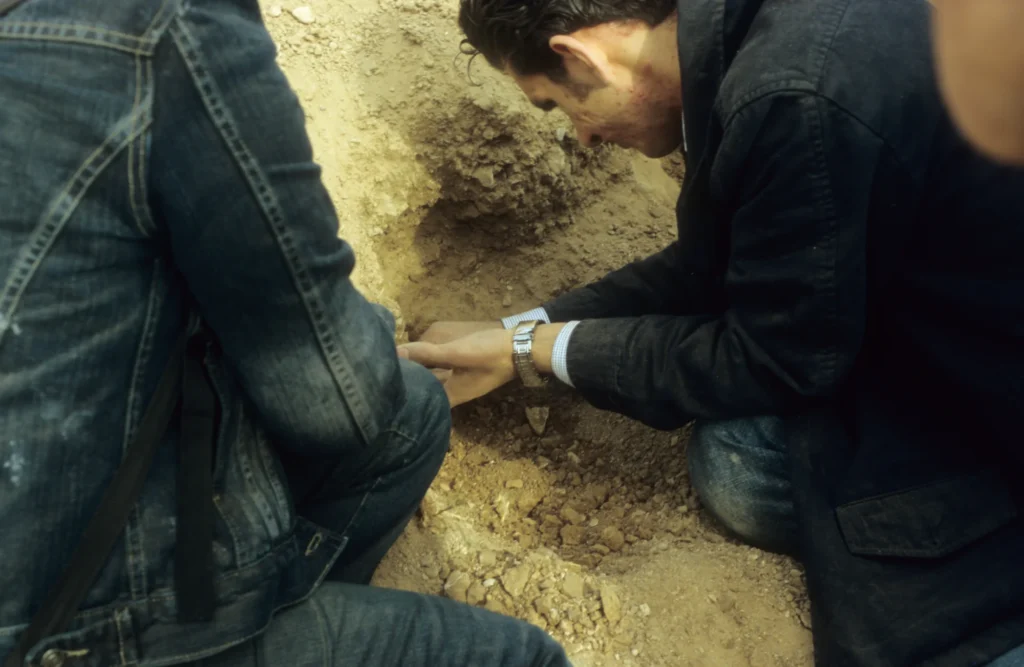
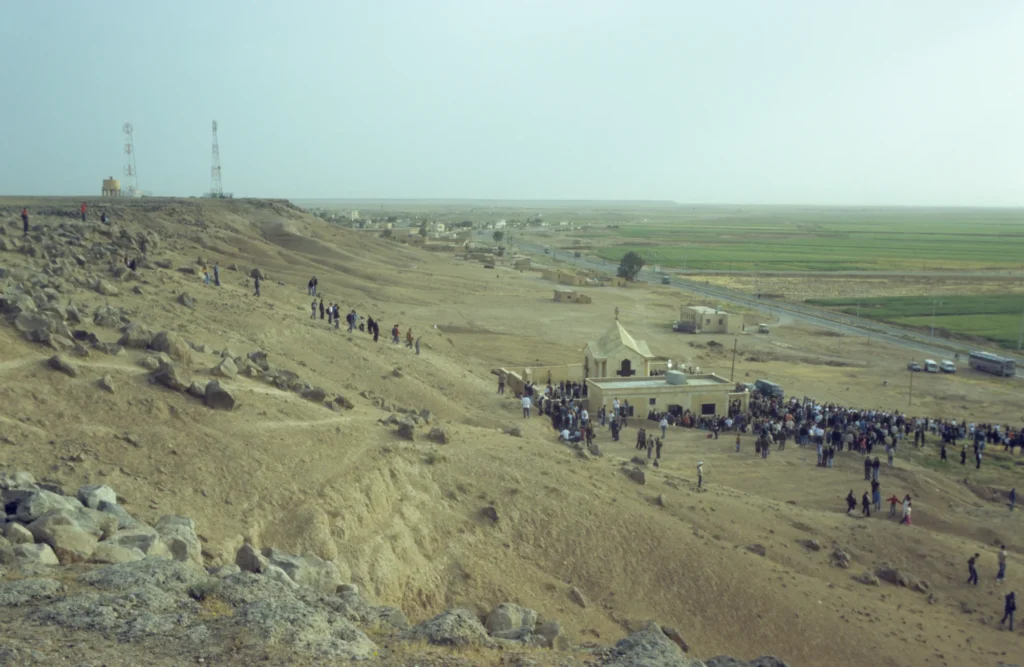
It is already noon when we return to the memorial site in Dayr az-Zawr. In the courtyard, the more than fifty-member church choir from Aleppo sings religious songs until the main service is held in the church. Closely packed together, the people stand on the plateau and follow the service, which is celebrated by the two patriarchs and broadcast outside. A murmur goes through the crowd in the courtyard as the side church door opens and the patriarchs appear. With measured steps they walk to a niche at the edge of the platform and celebrate the Requiem for the Martyrs on the eternal flame.
For Armenians all over the world the name Dayr az-Zawr stands for the attempt to destroy their people. In this city, the memory has been given a worthy place, which, thanks to donations, could be rebuilt even after its partial destruction by Daesh.
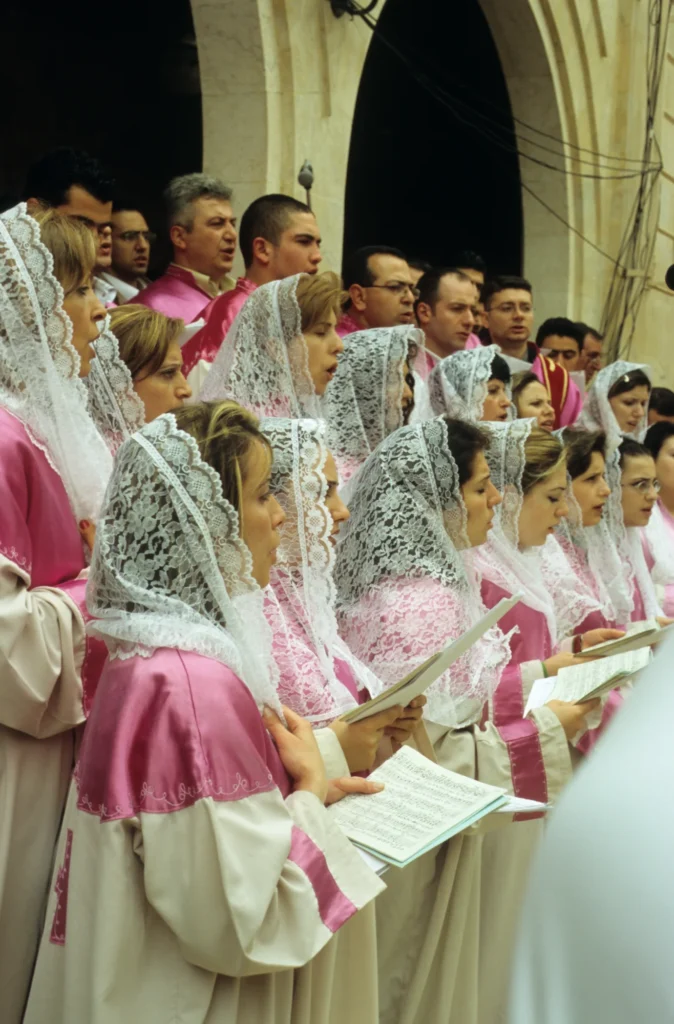
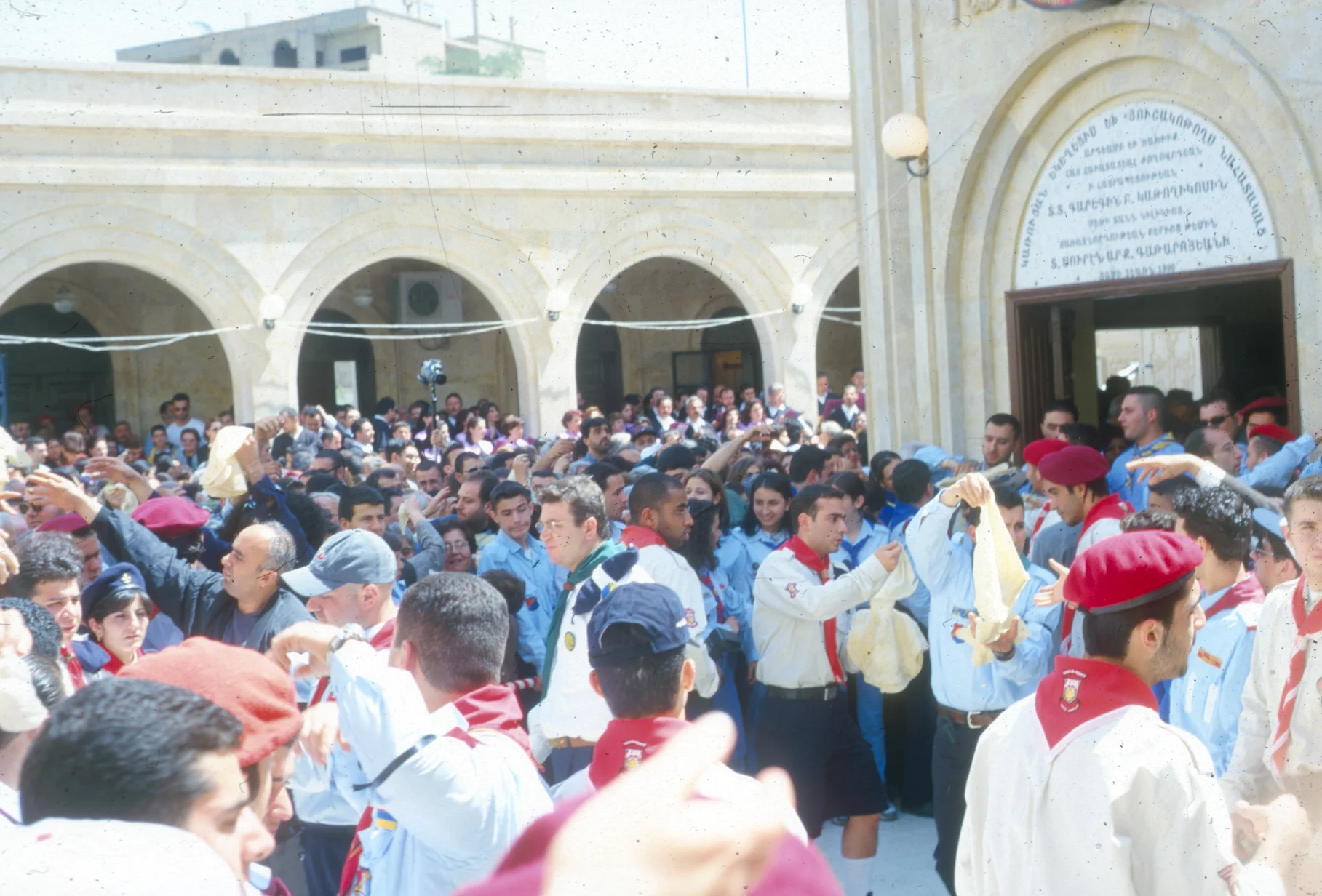
Featured image: On the Genocide Memorial Day: at a stop on the pilgrimage, Armenian priests throw wreaths into the Euphrates to commemorate the victims of the genocide of 1915-16 who died in this very river | Karin Pütt (CC-BY-NC-ND)
Published by Karin Pütt: Karin Pütt works on traditional architecture and culture in Syria. In the course of field research for her doctoral thesis “Tents, Domes and Central Hall Houses – Living and Building in Rural Syria”, she came across the topic of Armenian orphans who had survived the genocide and settled in Syria’s Jazira. This developed into a deeper interest in Armenian traces in Syria. She is part of the Syrian Heritage Archive Project team at the Museum of Islamic Art in Berlin since 2013.
